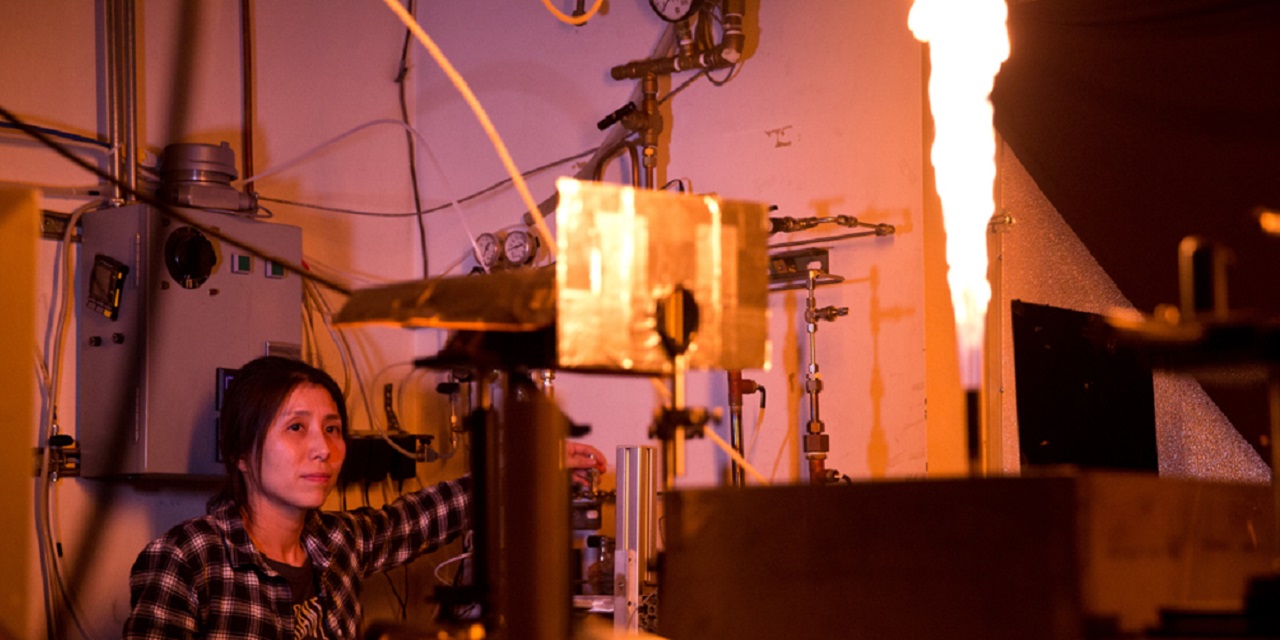Lauren Grant
-

Research
Our research is primarily experimental and focuses on the areas of hypersonics, propulsion, high-temperature flows, ablation, flow-structure interaction and combustion. Our work emphasizes the application of optical diagnostic techniques including particle image velocimetry (PIV), planar laser-induced fluorescence (PLIF), Raman and Rayleigh scattering, emission spectroscopy, pressure sensitive paint (PSP) and digital image correlation (DIC). You can…
-

High-speed wind tunnel
The high-speed wind tunnel facility can be operated at either Mach 2 or 5 — the Mach number is determined based on the nozzle block that is used. The tunnel is of the blowdown type and operates for run times of 1 to 2 minutes, depending on the conditions. The test section at Mach 5…
-

Direct-connect supersonic isolator facility
The Direct-Connect Scramjet Isolator is used to study shock-dominated flows inside supersonic dual-mode scramjet isolators, similar to those being developed by the US Air Force. Our current focus is on developing controls algorithms that will help keep the isolator from unstarting when encountering perturbations to the downstream pressure.
-

Mach 3 wind tunnel
The Mach 3 wind tunnel facility is a smaller-scale, low-Reynolds number tunnel with a 2 inch by 2 inch test section. The tunnel operates on air or nitrogen and is driven by a pressure-vacuum system with run times of about 1 minute. The facility is manufactured largely of acrylic as it has been used extensively…
-

High-pressure combustion facility
This facility operates up to 10 atm to test the effects of elevated pressure on combustion systems. Our current use is to investigate flame flashback in swirl flames and equivalence-ratio stratification. The facility is approximately 8 inches in diameter and constructed from stainless steel for strength and to avoid corrosion.
-

Supersonic Reacting Jet
The supersonic reacting jet was designed to study the effects of vibrational energy exchange in supersonic mixing and combustion. The jet is Mach 1.5 and issues into a slow co-flow of heated air. The jet is non-reacting when operated with nitrogen or air, and it combusts when operated with hydrogen fuel in the jet stream.
-

Jet-flame-in-co-flow facility
This facility is used to study the characteristics of turbulent jet flames. The jet issues from a straight tube and issues into a slow co-flow of air. This facility has been used to study the fine-scale structure of turbulence, 3D measurements of turbulent jet flames, and soot production in flames burning alternative jet fuels.
-
Boundary Layer Flashback in Swirl Flames
Flame flashback is the uncontrolled upstream propagation of a premixed flame, and can lead to thermal damage of components in gas-turbine combustors. We are studying the type of flashback where the flame propagates within the wall boundary layer of a swirling flow. This work is relevant to gas-turbine combustors that operate with high-hydrogen-content syngas fuels…
-
Flashback in High-Pressure Swirl Flames
The effect of pressure is being studied on the flashback dynamics of turbulent swirl flames. This work is relevant to gas-turbine combustors that will operate with high-hydrogen-content syngas fuels derived from coal gasification. Sponsored by DOE UTSR.
-
Physics and Control of Unstart in Supersonic Inlet-Isolator Configurations
This study seeks to gain understanding of the physics of supersonic inlet unstart using high speed schlieren, PIV and fast response pressure measurements. ; A simplified inlet/isolator model with plexiglass sidewalls is used. ; With further understanding of unstart, passive and active control methods involving vortex generators and vortex generator jets can be investigated.
-
Investigation of unsteadiness of shock-induced separated flows
In this project we are investigating the low frequency unsteadiness that characterizes the interaction of a shock wave with a turbulent boundary layer. This work has implications for the fatigue of structures and effectiveness of control surfaces on high speed aircraft and missiles. Our approach is to combine fast response pressure measurements with advanced optical…
-

-

